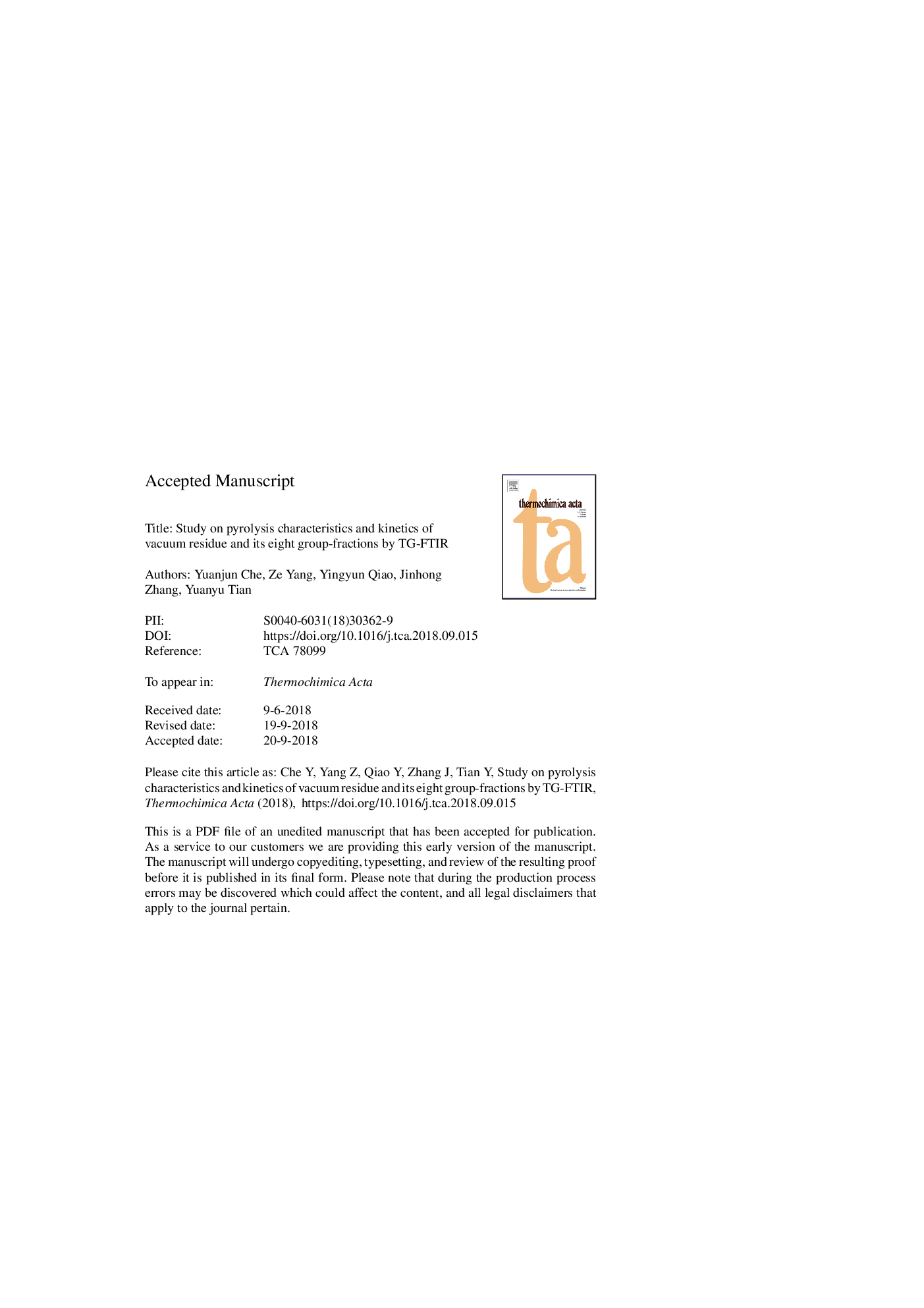| Article ID | Journal | Published Year | Pages | File Type |
|---|---|---|---|---|
| 11027938 | Thermochimica Acta | 2018 | 23 Pages |
Abstract
This study investigates the pyrolysis behaviors and kinetics of vacuum residue (VR) and its eight group-fractions using TG-FTIR. The weight loss properties of the fractions of VR suggest that each fraction has individual cracking pathways which are determined by the chemical nature of the constituents. The Friedman and Ozawa-Flynn-Wall (OFW) methods were used to calculate the reaction kinetic parameters of VR and its fractions, at heating rates of 10, 30, 50, and 100â°C/min. The activation energies of saturates and aromatics increased with the increase of conversion rates, whereas that for resins, asphaltenes and VR increased initially and then decreased. The on-line FTIR analysis of the gaseous products showed that the different structure of VR and its fractions leaded to the discrepancy of the release curves. Saturates and aromatics had significant release peaks at 530âââ750â°C, indicating they were the major contributors of methane, ethylene and light aromatics during the pyrolysis of VR within the temperature range of this study.
Related Topics
Physical Sciences and Engineering
Chemical Engineering
Fluid Flow and Transfer Processes
Authors
Yuanjun Che, Ze Yang, Yingyun Qiao, Jinhong Zhang, Yuanyu Tian,
